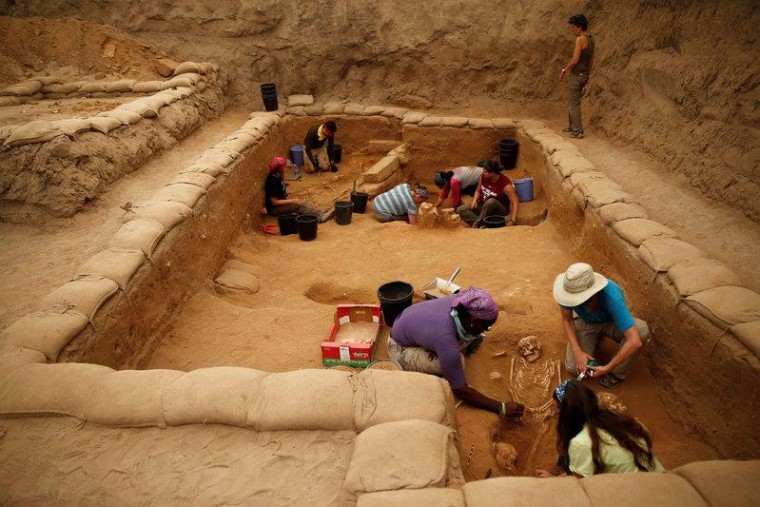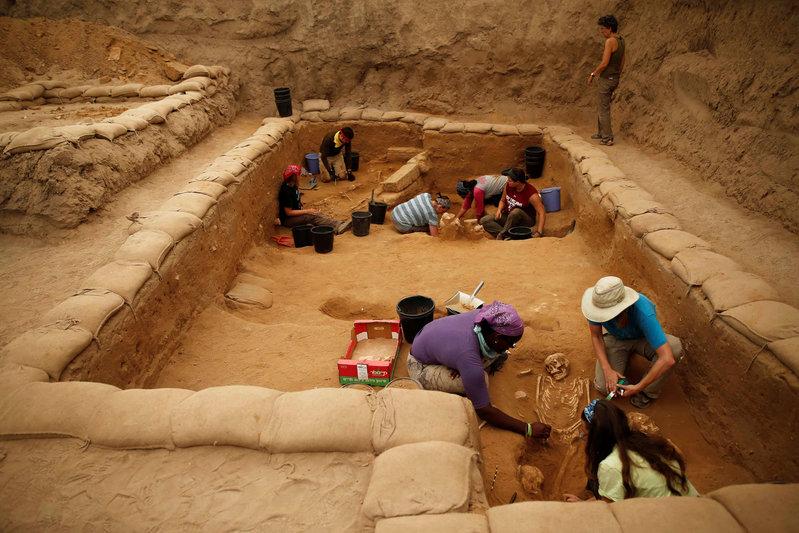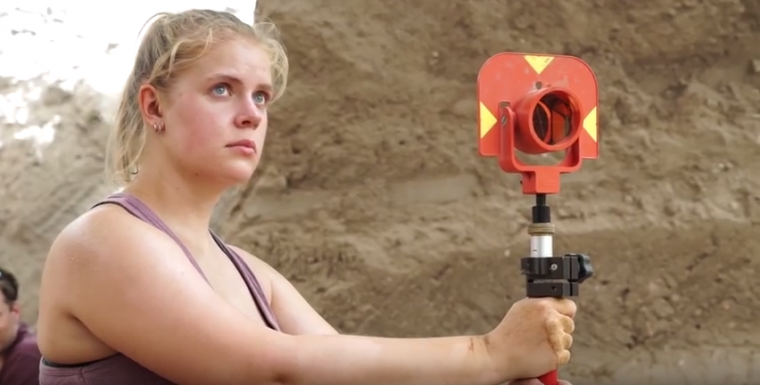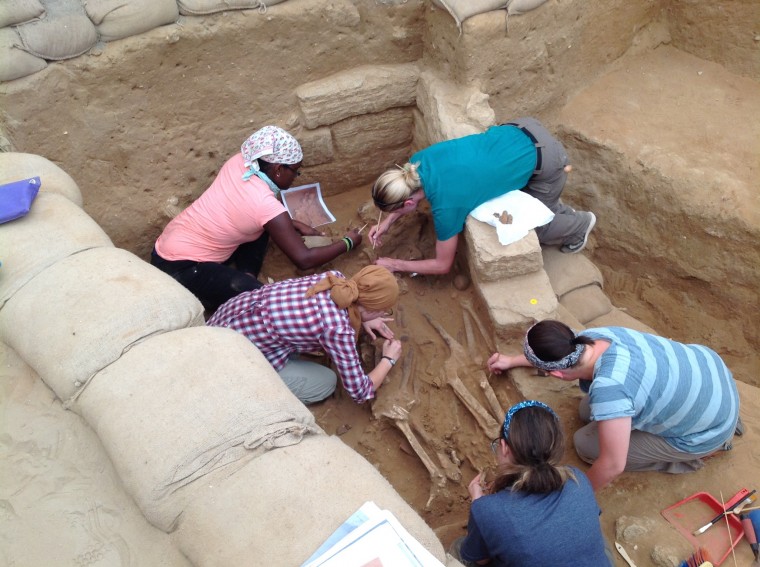Wesleyan Group Helps Discover First Philistine Cemetery


Two Wesleyan students, one recent alumna and a faculty member contributed to a groundbreaking discovery of the first Philistine cemetery, a crowning achievement of more than 30 years of excavation in Ashkelon, Israel. Archaeologists and scholars have long searched for the origin of the Philistines, and the discovery of the cemetery is poised to offer the key to this mystery. Findings from the cemetery, dated to the 11th–8th centuries BCE, may well support the claim – long inferred and recorded in the Bible – that the Philistines were migrants to the shores of ancient Israel who arrived from lands to the West around the 12th century BCE.
Kate Birney, assistant professor of classical studies, assistant professor of archaeology, assistant professor of art history, is the assistant director of the Leon Levy Expedition to Ashkelon and has been bringing Wesleyan students to the site since 2011 to participate in the research and excavation. The 3,000-year-old site, located in the southern district of Israel on the Mediterranean coast, offers clues to the Philistines’ way of life. Little is known about their origins.

This summer, Joy Feinberg ’19, Jaimie Marvin ’19 and Sarah McCully ’16 worked on the Philistine cemetery. McCully ’16, who came to Ashkelon with Birney years ago, is now a staff member for the Leon Levy Expedition. In addition, Sam Ingbar ’16, Hannah Thompson ’17, Maria Ma ’17 and Sabrina Rueber ’18 are also in Ashkelon this summer working on the excavation of a 7th century merchants’ neighborhood.
“It’s impossible to imagine working with bodies that are over 2,000 years old, and these are people who had lived and had lives and had families,” Feinberg said. “We get to now learn from them and look at a moment of history that hasn’t ever been seen before and it’s absolutely incredible.”
Excavation at the site of the newly discovered Philistine cemetery, particularly in areas where the burials were undisturbed (not reused or looted in antiquity), allows archaeologists and scholars to begin constructing a picture of the typical grave goods buried with the Philistines. Decorated juglets filled with what is assumed to have been perfumed oil, storage jars and small bowls make up the bulk of the grave goods. A few individuals were found wearing bracelets and earrings, and some were accompanied by their weapons, but the majority of the individuals were not buried with personal items, Birney said.
The Philistines buried their dead primarily in pits that were excavated for each individual: male or female, adult or child. Later, additional individuals were sometimes placed in the same pit, which was dug again along roughly the same lines, but the new individuals were interred with their own grave goods. Cremations, pit interments and multi-chambered tombs were also found in the cemetery.

The Philistines are best known as the archenemy of ancient Israel from the Hebrew Bible, and excavations at the multiple sites, including Ashkelon, have demonstrated how culturally distinct they were from the Israelites of that period.
Artifacts uncovered at the site, including ceramics, jewelry and weapons, as well as the bones themselves, hold the promise of being able to connect the Philistines to related populations across the Mediterranean. To this end, bone samples taken from the site are currently undergoing three types of testing—DNA, radiocarbon and biological distance studies – in order to help ascertain the Philistines’ origin.
Ashkelon was a key Mediterranean port and center for maritime trade from the Bronze Age to the Crusades, when it was destroyed and left uninhabited until modern times. Sporadic excavation began in the 19th century, but the bulk of Ashkelon’s history was only revealed beginning in 1985 with the work of the Leon Levy Expedition. Several Biblical passages link the Philistines to ancient Crete. At the same time, archaeologists have long noted dramatic cultural changes in the Ashkelon region in the early 12th century BCE, roughly at the time when ancient Egyptian texts mention “Sea Peoples” moving into the Eastern Mediterranean. Using these clues, scholars have argued that the Philistines emigrated from the Aegean in the early Iron Age, bringing the cultural practices of their homeland, which appear to have been pointedly different from those prevailing at the time in the area.
The Leon Levy Expedition has been conducting large-scale excavations on the tell of ancient Ashkelon since 1985. The summer of 2016 is the final excavation season of the Leon Levy Expedition.
News regarding the Philistine cemetery discovery has already been featured in July’s National Geographic, a July 10 BBC broadcast, and the July 10 issue of The New York Times. Feinberg is featured in an Ashkelon Press video online here.
(All photos and video stills courtesy of Leon Levy Expedition to Ashkelon and Ashkelon Press)

